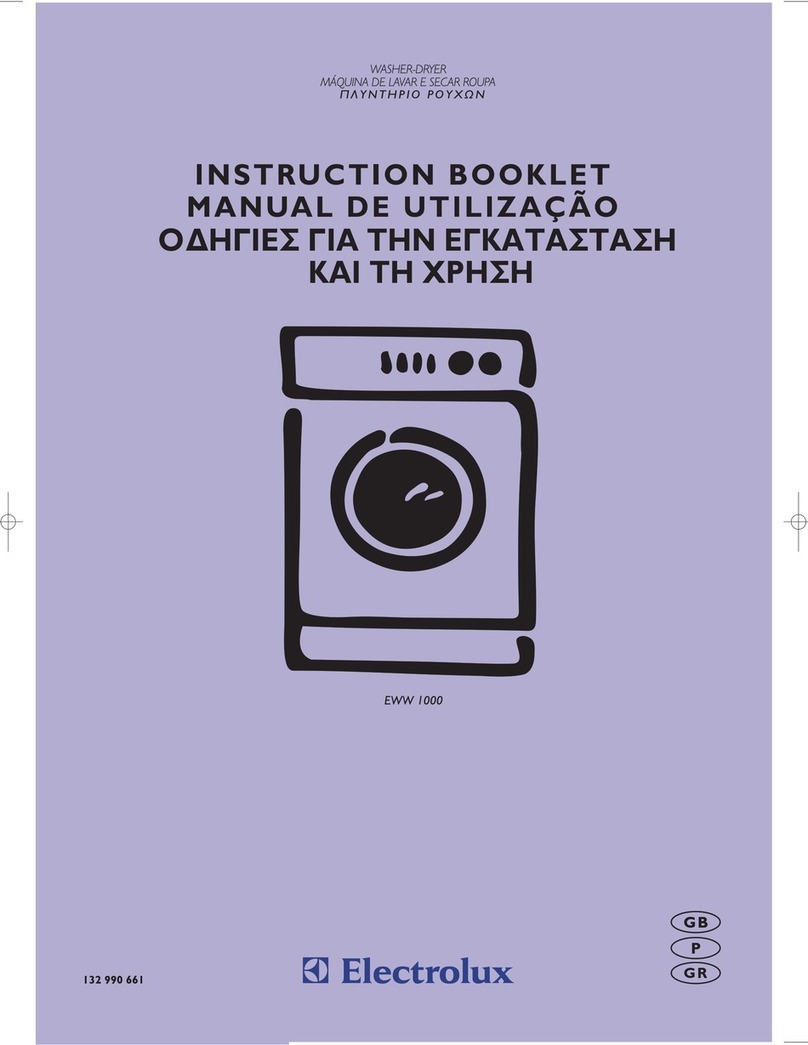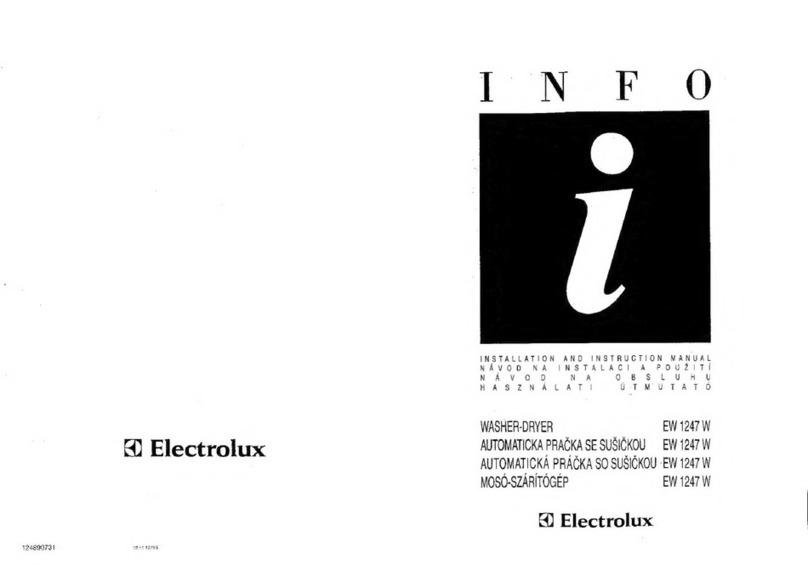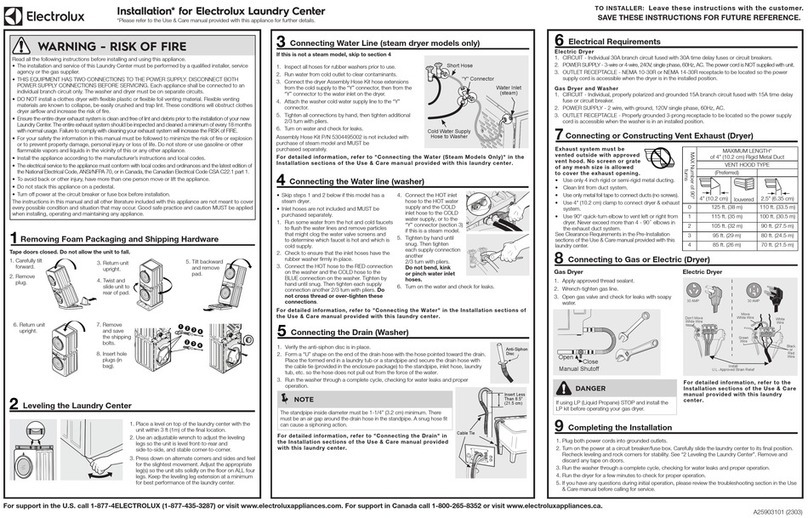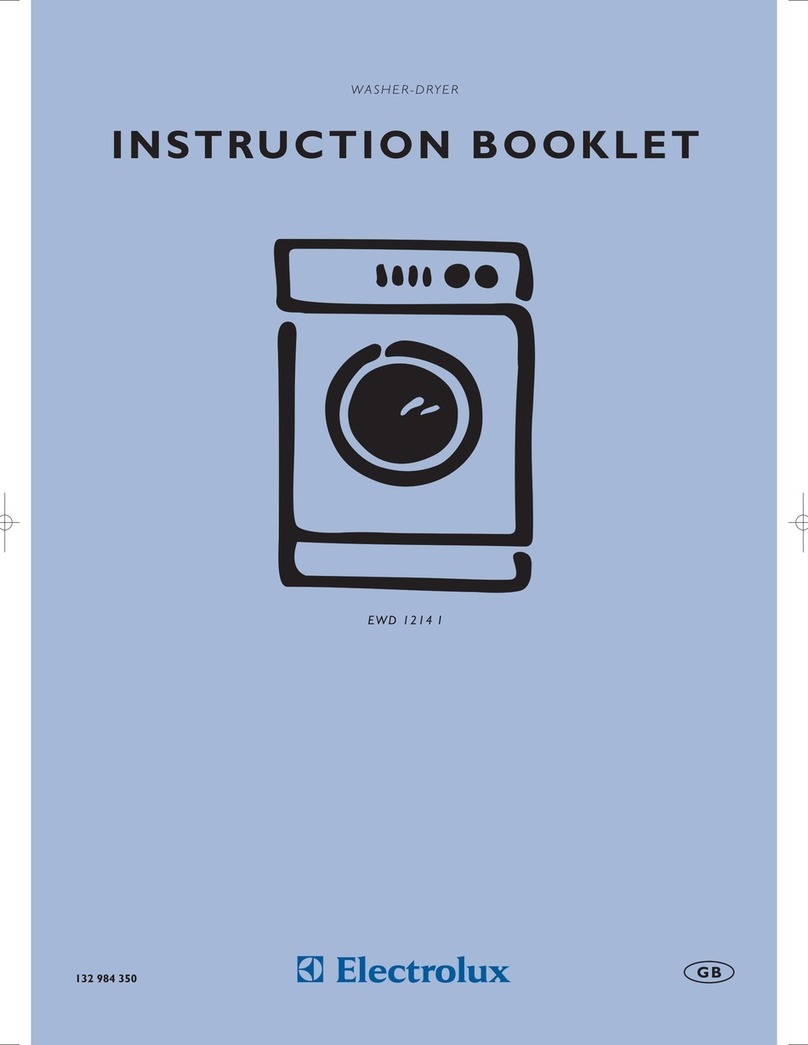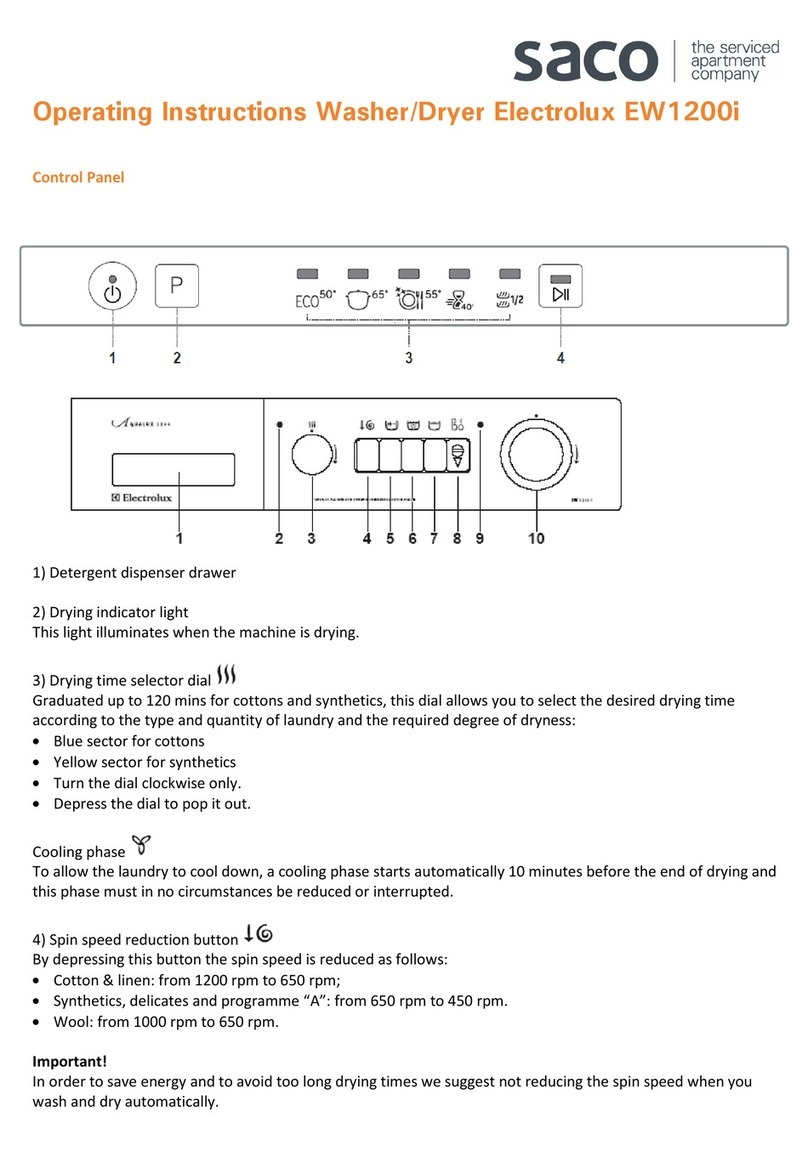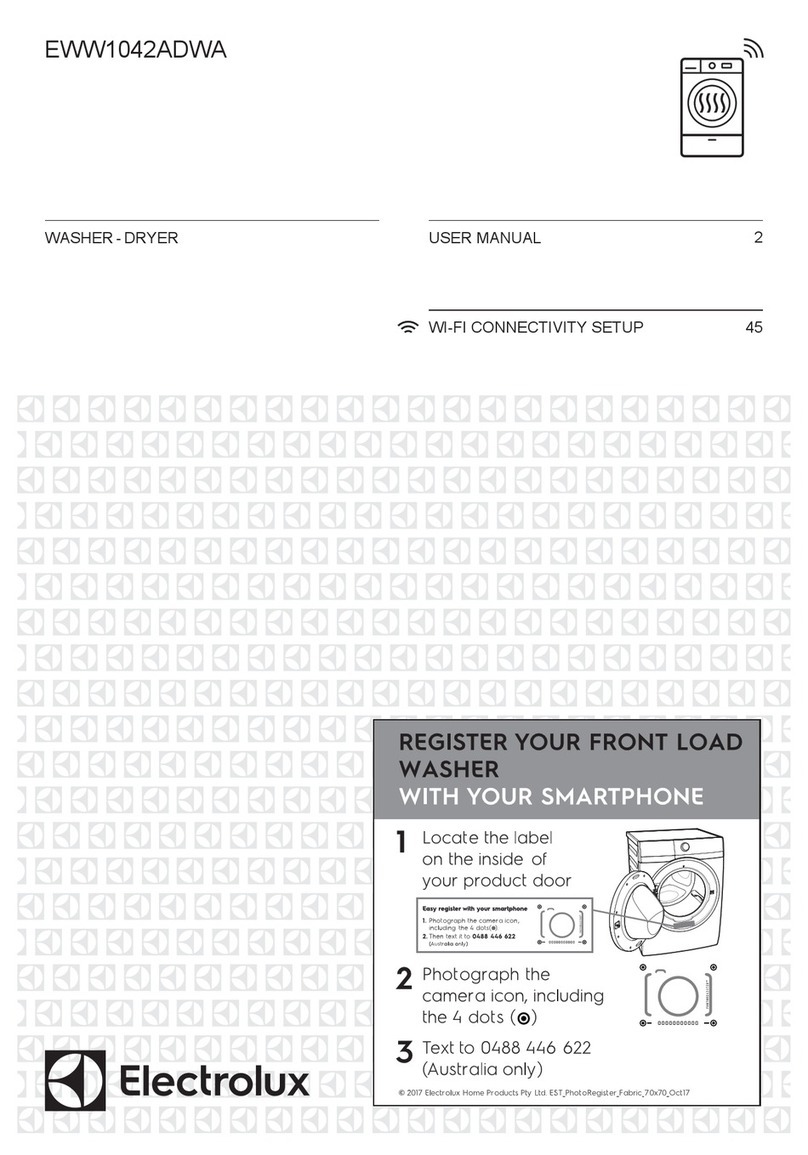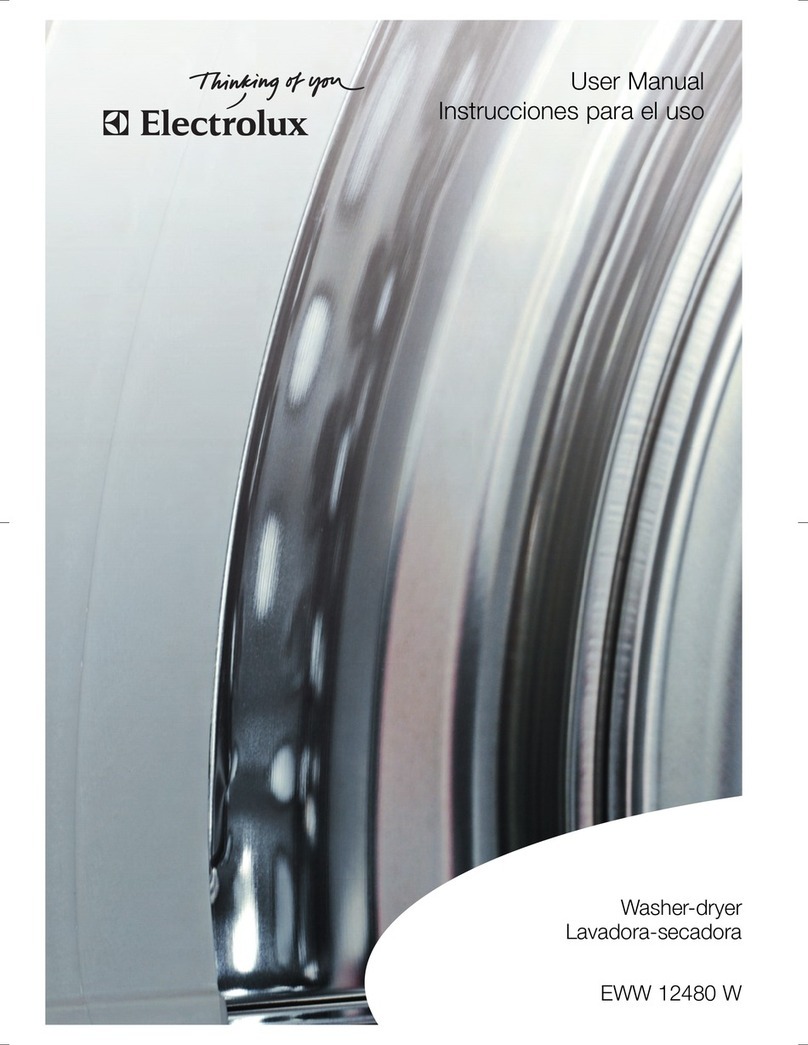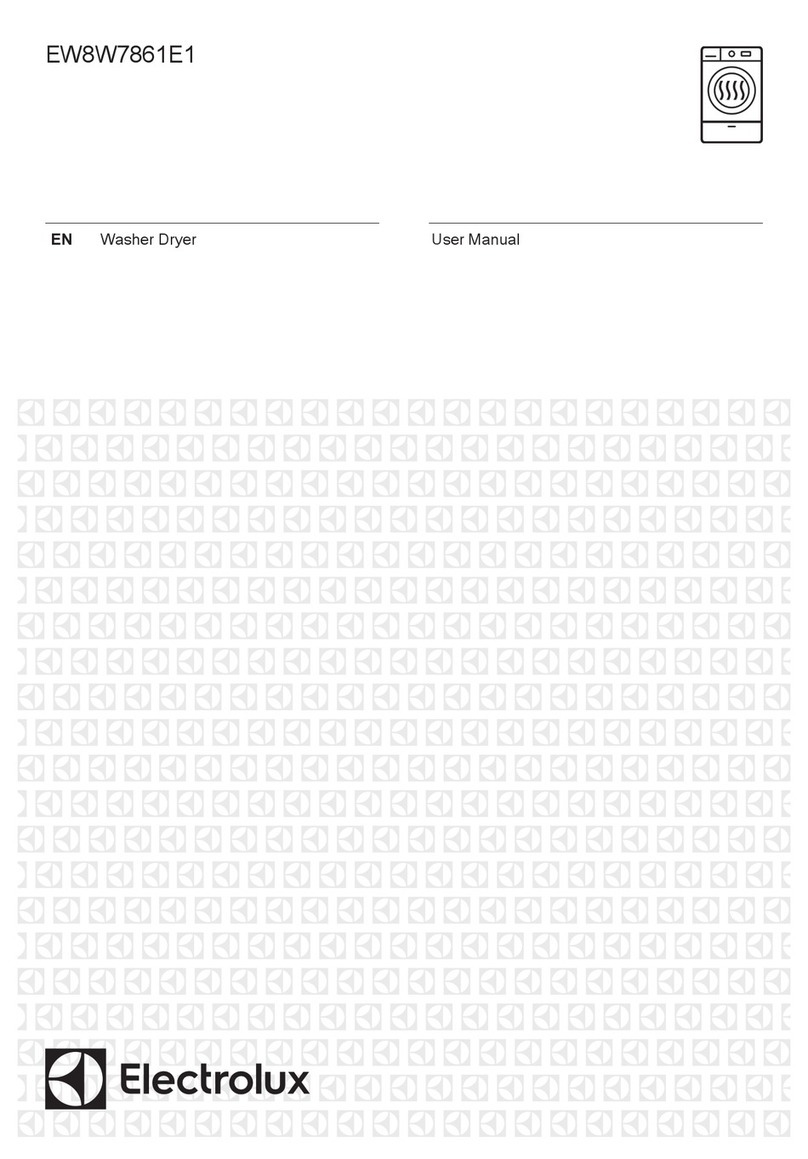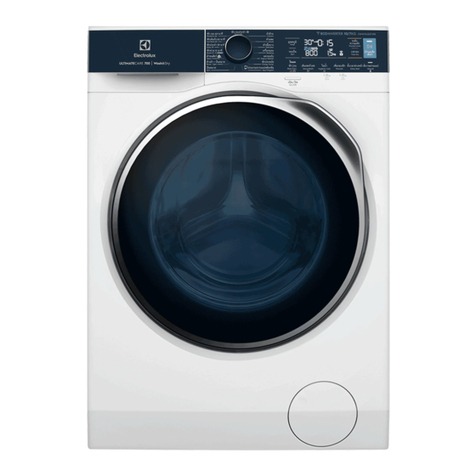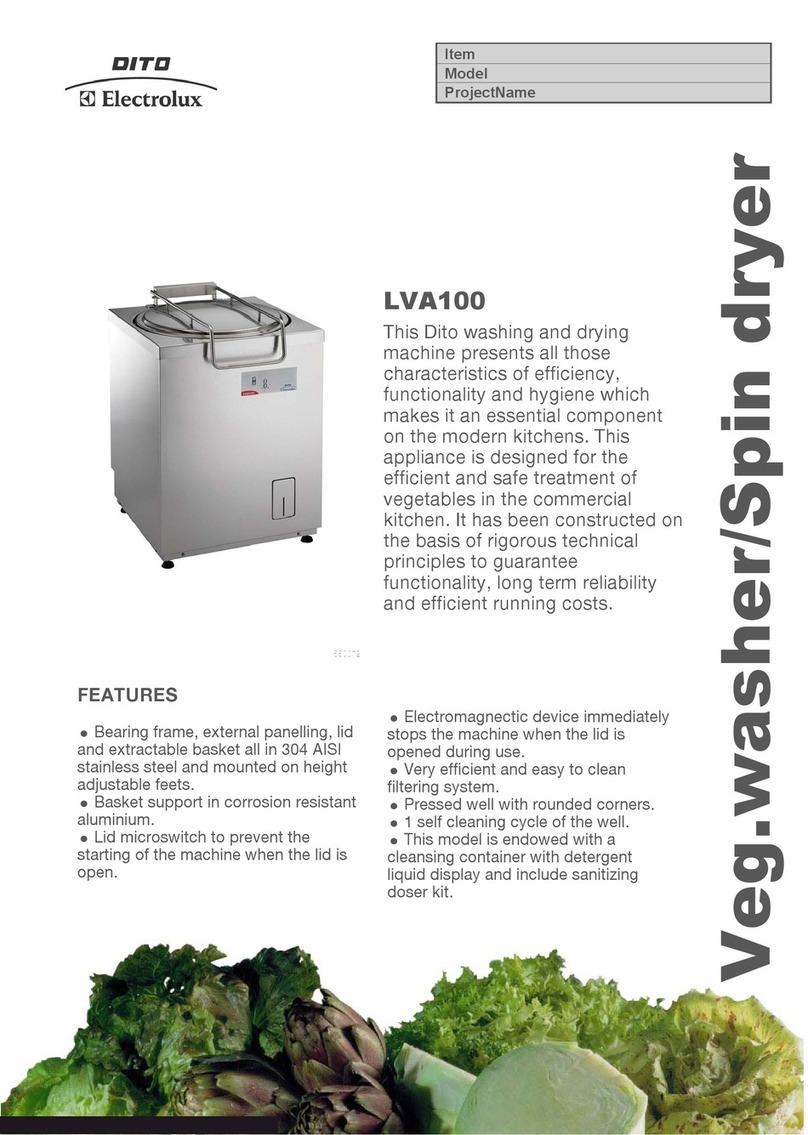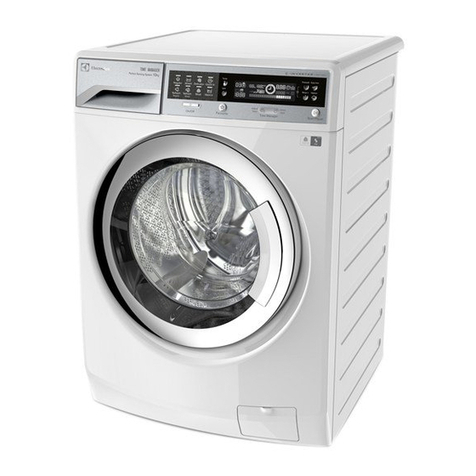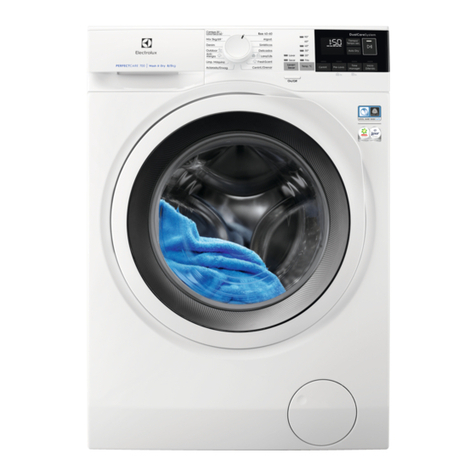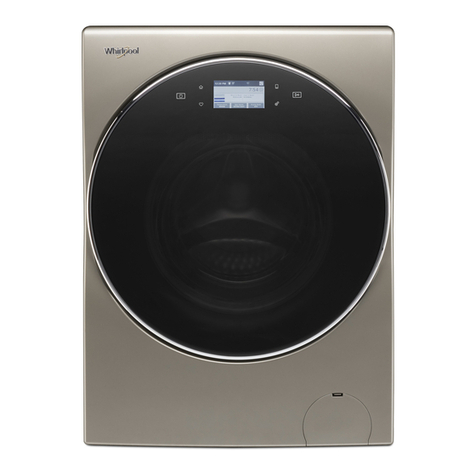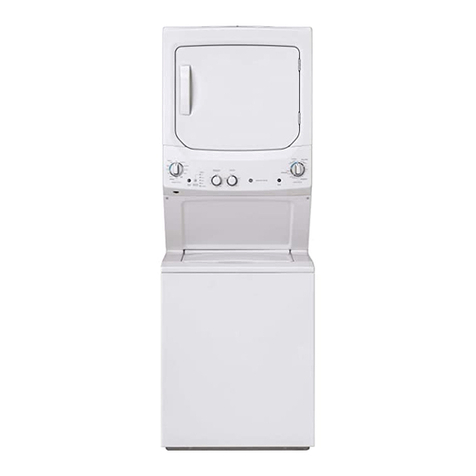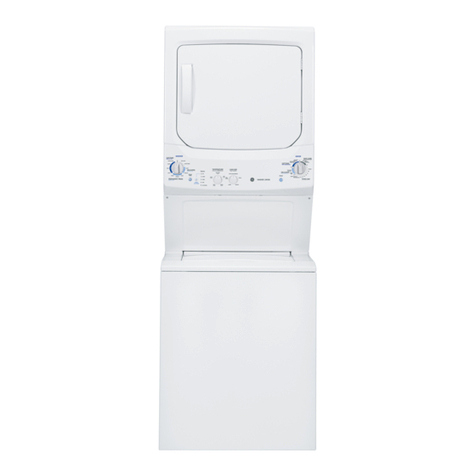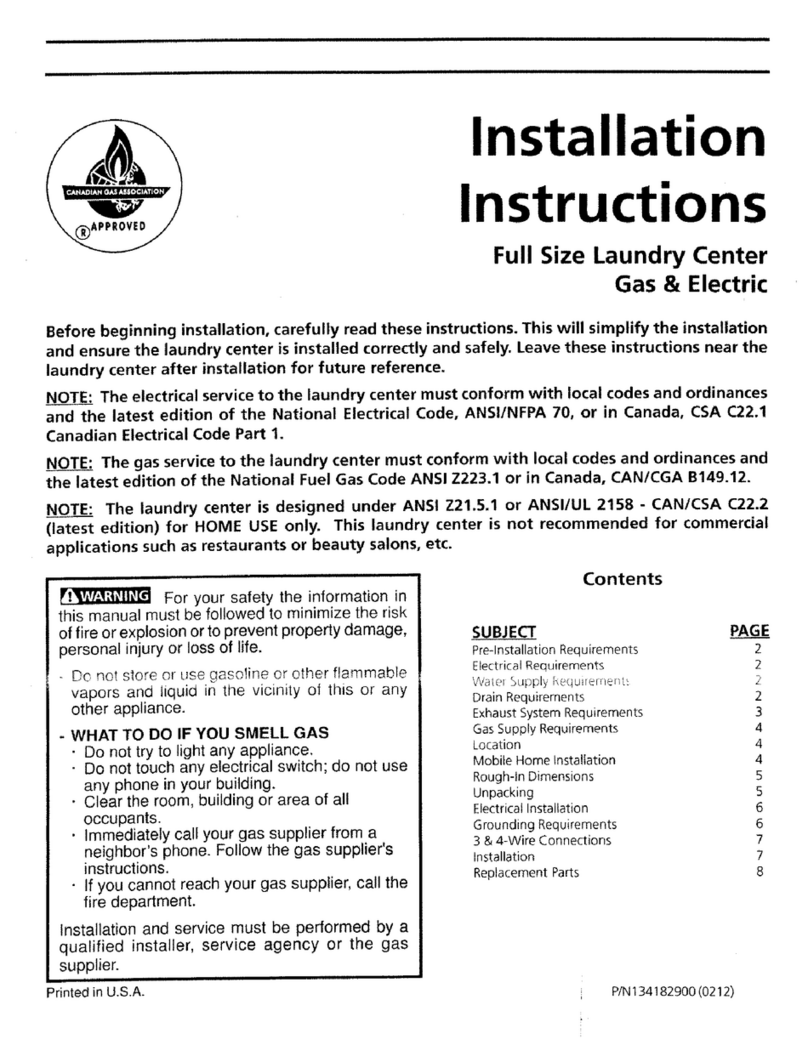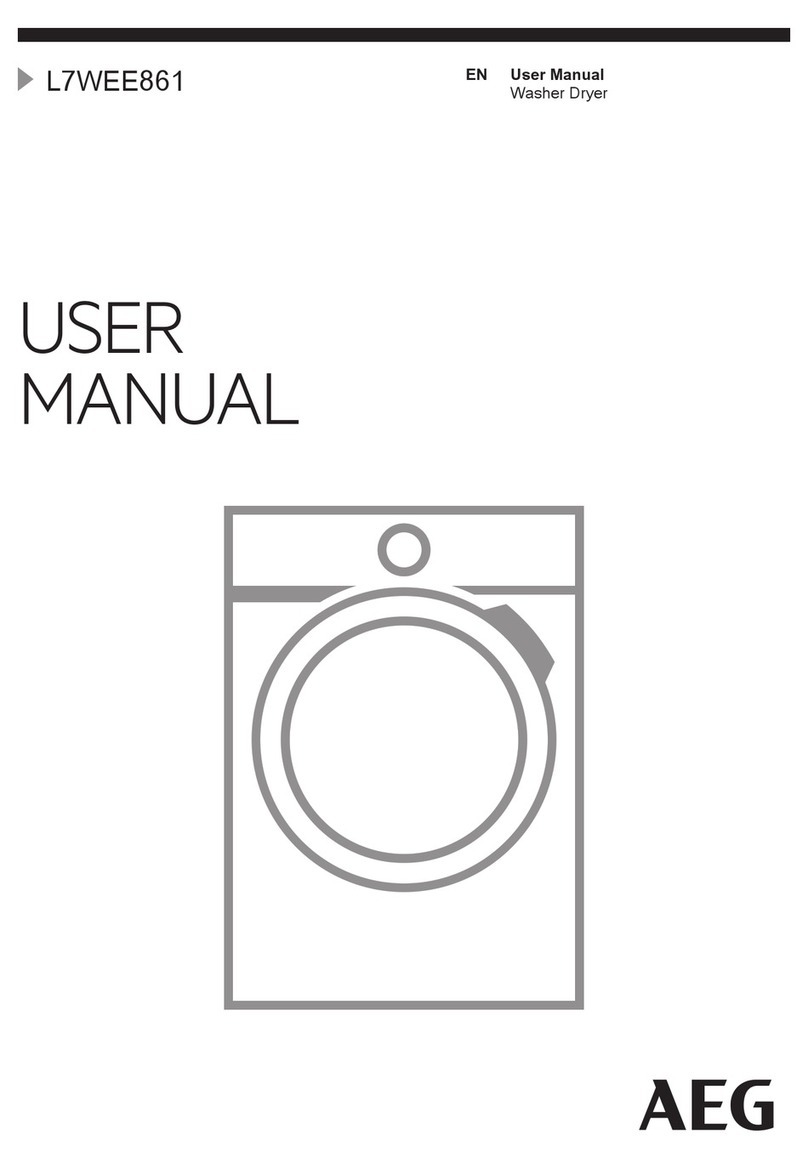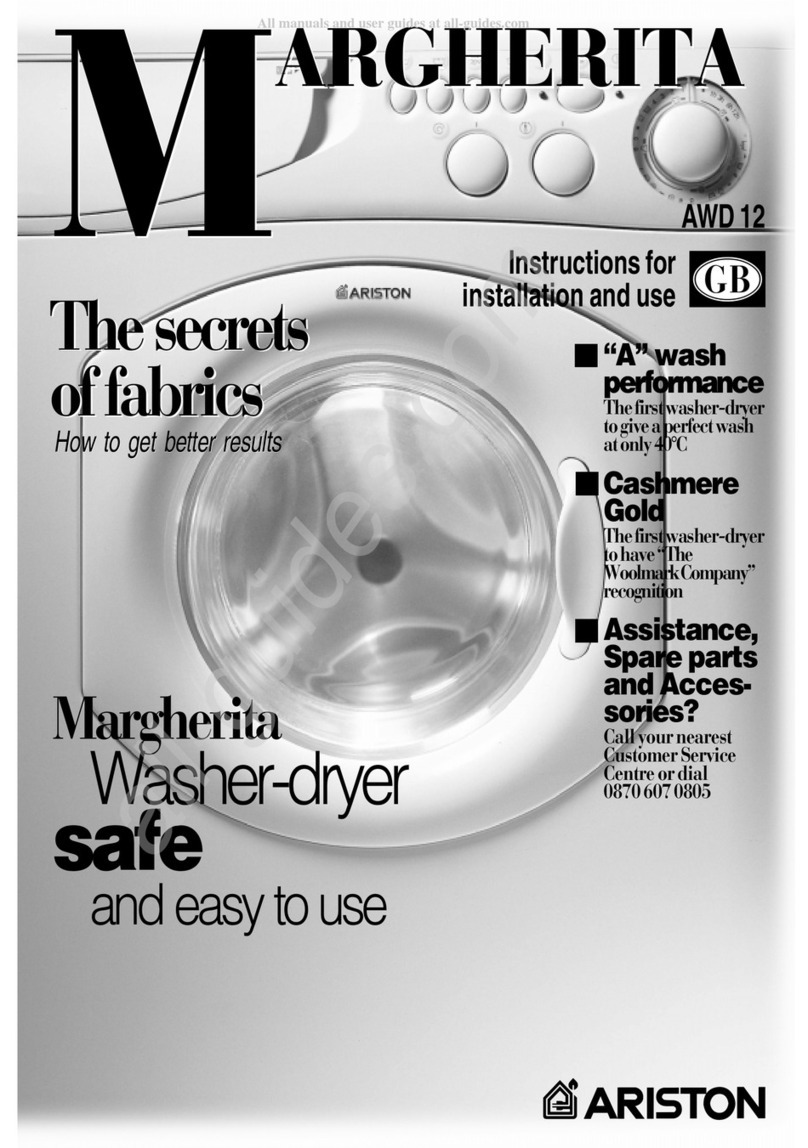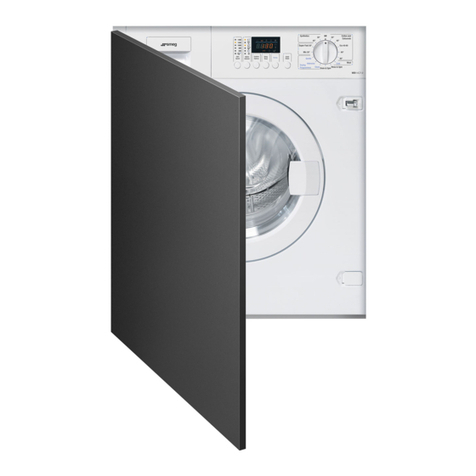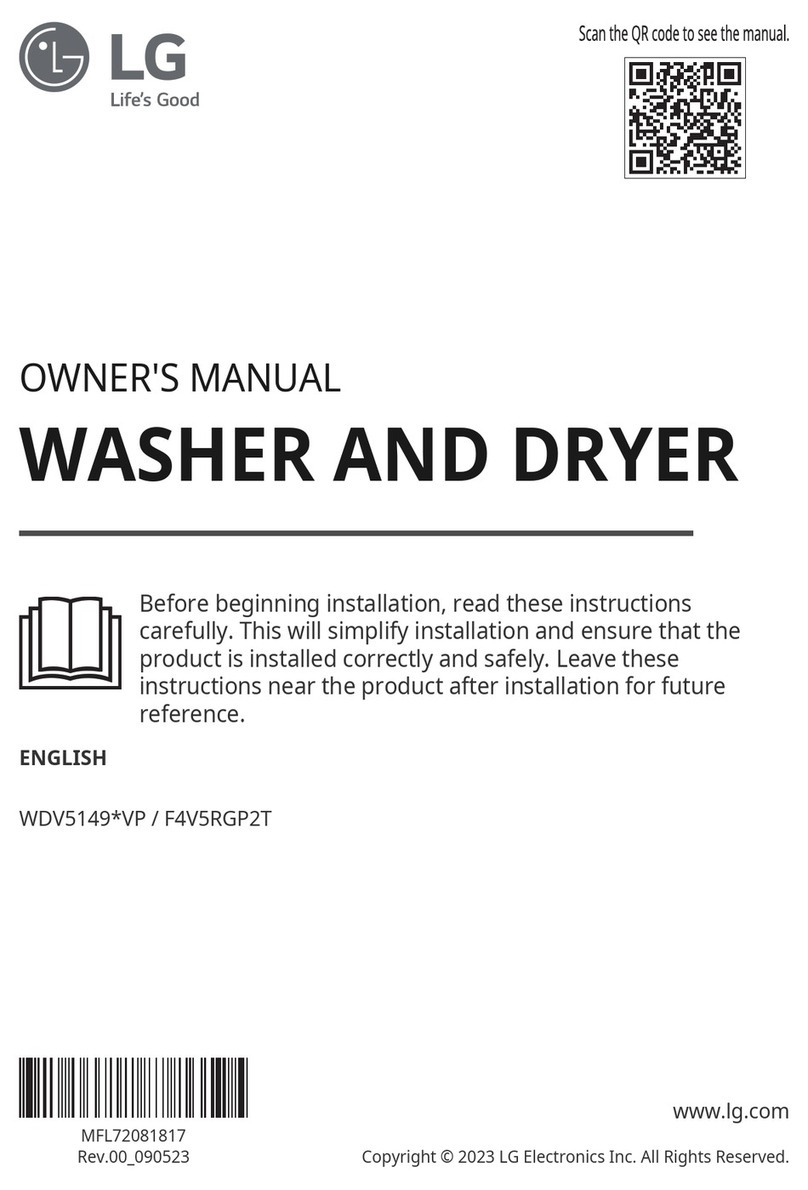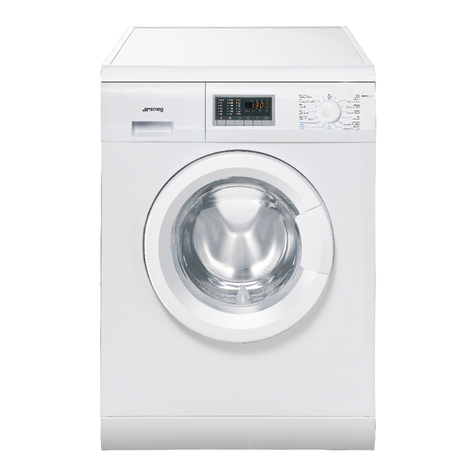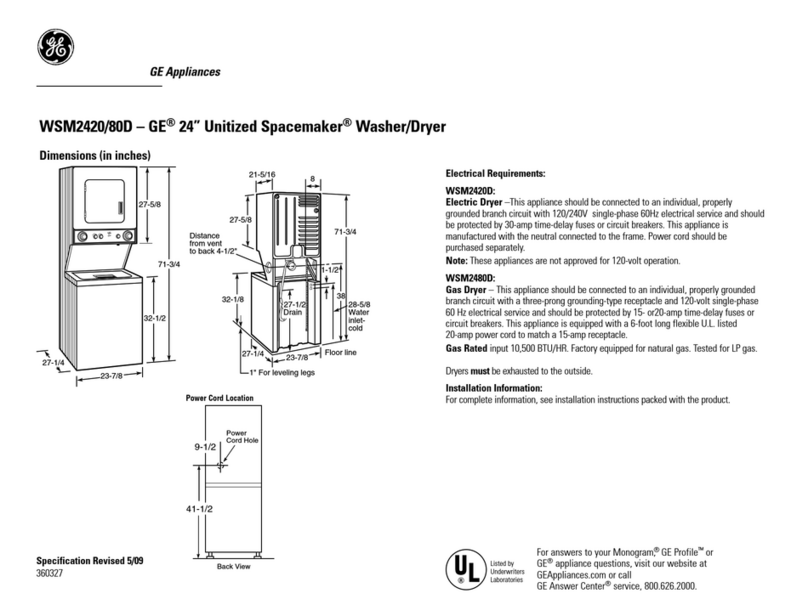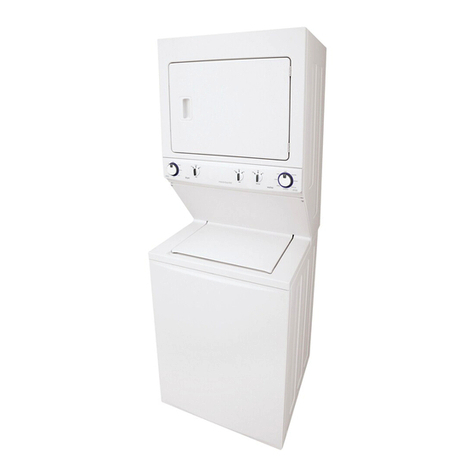
ENGLISH 7
• Never tumble dry items which have
had contact with chemicals such as
dry cleaning uid. These are of volatile
nature and could cause an explosion.
Only tumble dry items which have
been washed in water or require
airring.
• Plastic detergent dispensers should
not remain in the drum during the
drying cycle, as the plastic used is
not designed to withstand the heat. If
you wish to wash-through-to dry you
should use the conventional detergent
dispenser drawer.
• Items that have been spotted or
soaked with vegetable or cooking oil
constitute a re hazard and should not
placed in a washer-dryer.
Oil-aected items can ignite
spontaneously, especially when
exposed to heat sources such as
in washer-dryer. The items become
warm, causing an oxidation creates
heat.
• If the heat cannot escape, the items
can become hot enough to catch re.
Piling, stacking or storing oil-aected
items can prevent heat from escaping
and so create a re hazard.
• If it is unavoidable that fabrics contain
vegetable or cooking oil or have been
contaminated by hair care products
be placed in washer-dryer, it should
rst be washed in hot water with extra
detergent - this will reduce, but not
eliminate the hazard. The “cool down”
cycle of washer-dryer is used to reduce
the temperature of the items.
CAUTION!
To minimize the risk of re in a
washer-dryer, the following should be
observed:
–Never stop a washer-dryer
before the end of the drying
cycle unless all items are quickly
removed and spread out so that
the heat is dissipated.
–Do not dry cloths in washer-dryer
with dry clean solvents. Also, do
not use laundry enhancement
products during the drying cycle.
It should not be removed from the
washer-dryer or piled or stacked while
hot.
• Items that have been previously
cleaned in, washed in, soaked in or
spotted with petrol/gasoline, dry-
cleaning solvents or other ammable
or explosive substances should not be
placed in washer-dryer.
• Highly ammable substances
commonly used in domestic
environments include acetone,
denatured alcohol, petrol/gasoline,
kerosine, spot removers (some
brands), turpentine, waxes and wax
removers.
• Items containing foam rubber (also
known as latex foam) or similarly
textured rubber, like materials should
not be dried in a washer-dryer on a
heat setting.
• Foam rubber materials can produce
re by spontaneous combustion when
heated.
• Fabric softeners or similar products
should not be used in a washer-
dryer to eliminate the eects of
static electricity unless this practice
is specically recommended by the
manufacturer of the fabric softener or
product.
• Undergarments that contain metal
reinforcements should not be placed
in a washer-dryer. Damage to the
washer-dryer can result if metal
reinforcements come loose during
drying. When available a drying rack
could be used for such itmes.
• Plastic articles such as shower caps
or babies’ waterproof napkin covers
should not be placed in washer-dryer.


